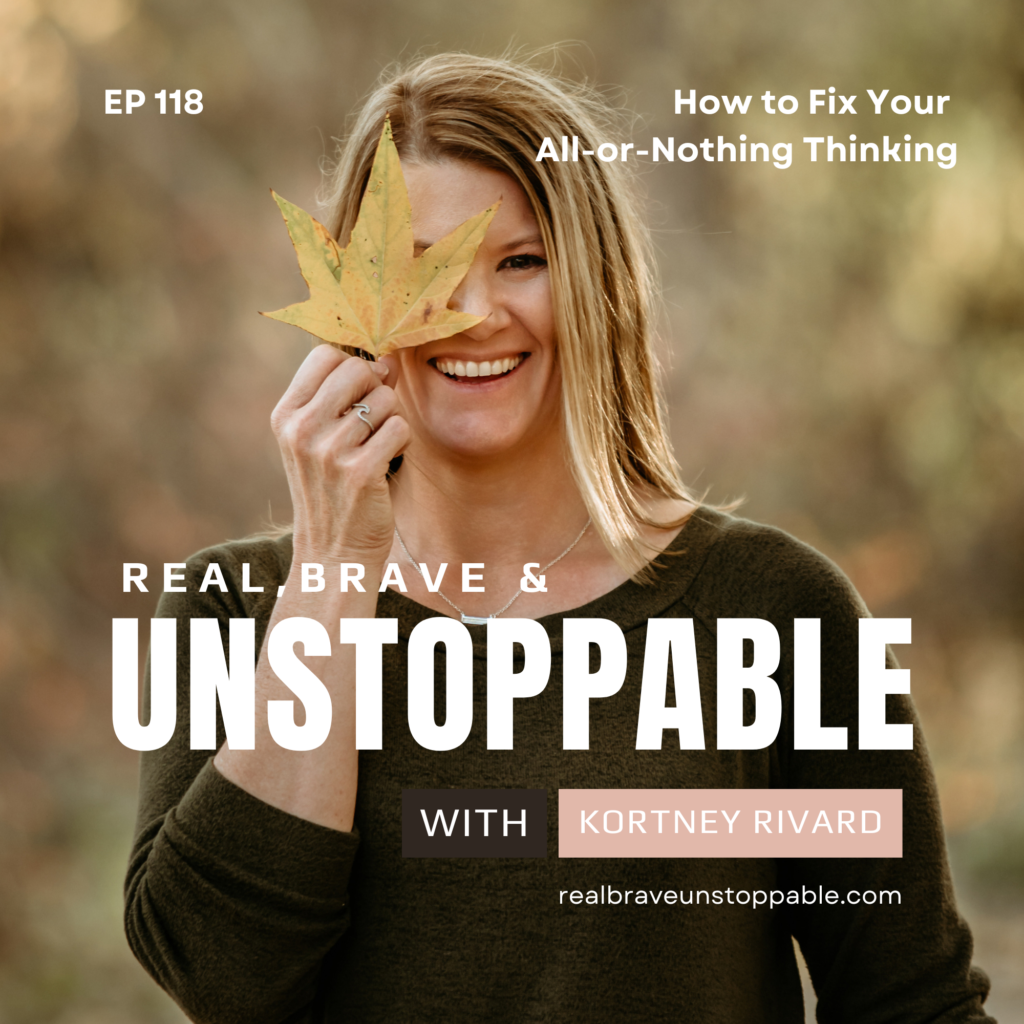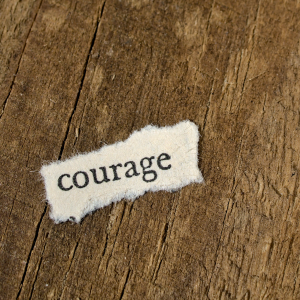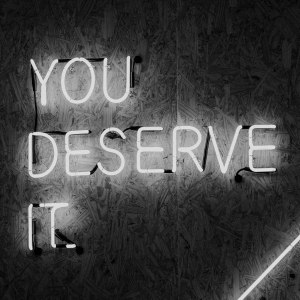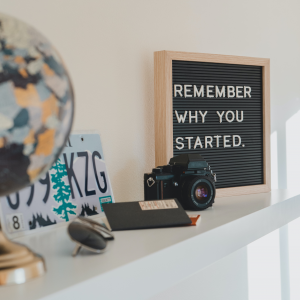Listen to this episode to learn all about all-or-nothing thinking. What it is, why it’s not helpful and what you can do about it.




Show Notes:
Welcome to Episode #118 of Real, Brave, & Unstoppable!
Our thoughts can be really unhelpful to us sometimes! Have you ever noticed yourself thinking in extremes?
Something is either a success or failure. Your partner is the best partner ever or the worst human on the planet.
Always or never. Right or wrong. With me or against me. Healthy or unhealthy. Weak or strong.
Otherwise known as all-or-nothing thinking, black-and-white thinking or binary thinking, these patterns of thought aren’t usually very helpful. In fact, they can be detrimental to our wellbeing.
Listen to this episode to learn more about all-or-nothing thinking – what it is, why it isn’t usually helpful, and what you can DO about it.
Have a listen and don’t forget to leave a rating and review!
Resources

How to Create the Life You Want FREE workbook
Click HERE

Podcast host and life coach, Kortney Rivard, helps women who want to live more exciting, more fulfilling lives get out of their own way and start creating a life they love.. Book a call to chat about how you can start changing YOUR life today.
CLICK HERE
Support the show (https://www.buymeacoffee.com/kortneyrivard)
Other episodes:
- Ep 122: How to Take the High Road When People Say Mean Things About You
- Ep 121: 5 Ways to Make the Mirror Your Friend
- Ep 120: Getting Back on the Goals Bandwagon – Setting Better Goals
- Ep 119: Slow Down! How to Embrace Getting Still and Waiting Patiently
- How to Fix Your All-or-Nothing Thinking
The Real, Brave, & Unstoppable full episode catalog
Transcript:
Episode 118:
Hello, everyone and welcome back to real, brave and unstoppable for episode number it’s either 118 or 119 now… I always forget. Today I’m going to talk about all or nothing thinking otherwise known as black and white thinking or thinking in extremes, binary thinking. I’m going to talk about what it is, why it doesn’t usually serve you. Like, you know, why we care about it. And how to shift your thinking to something that’s more helpful to you. So we’ll dive into that in a few minutes, but first I want to share with you a very cool offer that I have for the holiday season, which it’s insane that that season is like here. But, I have a, and also I have a beta program that I’m going to be offering in the new year. So, I’m going to talk about both of those things real quickly before we dive into the meat of the episode. But obviously the holiday season is like right around the corner and this can be a really hard time for a lot of us. It’s stressful anyway, there’s a lot going on. We take on too much. Oftentimes our healthy habits go out the window. Uh, some people have a really tough time with sadness or grief. I know for me, it brings up a lot of memories of when I was going through my divorce and that’s really hard. And then there are a lot of other things too, but the point is it’s a fun time and it can also be a hard season for a lot of people. So I’m offering a super amazing one-time session to help you with like one holiday related issue that you’re not really sure how to navigate. That could be how to let go of needing to be perfect during this time. You know, it really doesn’t matter what kind of wrapping paper you have or if you have bows and all the presents… So is some an unnecessary perfectionism getting in your way, or maybe you have a family situation that you’re trying to navigate. You know how to set some boundaries, things like that. Maybe it’s sticking to healthful eating habits. There are a lot of parties during this time of the year. And sometimes it can feel like every weekend you’re having to like manage like, thinking about not drinking too much or not eating too much. And often, or like our healthy movement, or exercise routines kind of go out the window when we get busy. There’s usually a lot of things on the to-do list. So kind of managing that overwhelm with that something that we can work on. Or, even really just looking at, you know, looking ahead to the new year, like, what do you want to vote? What do you want to accomplish in the new year? We can also kind of look at in this past year. Like what, what do you wish would have gone differently? And how can you prepare for like, making some changes related to that in the new year? So many things. So it’s a 45 minute session and it’s only$49. Like that’s so cheap guys. It’s like my gift to you. It’s like just barely over a dollar a minute, which is insane. It’s like$180 value. So. You know, you also get the rare opportunity to do a one-off session with me to see what coaching is like, and that’s not something I do very often. Usually if you want to work with me, you’ve got to commit to a, like a container of time. But this one, you know, during the holidays, people are so busy anyway, like I mentioned, so having this one session. Can really kind of change your season. So what if you were able to invest$49 and$49 got you so much more ease, so much more fun being present with your kids. Not pulling your hair out due to stress. Not gaining those five to 10 pounds that most people gain during the holidays. That’s kind of a no brainer to me. So visit the show notes for the link. Go visit the link and you can just purchase it on the, on the website. So next thing. Some of, you may know that I’m also a personal trainer, certified personal trainer. And I just finished a specialized certification for women’s specific health and fitness coaching. Being active has always been a passion for me, and now that I’ve entered, like the second century of my life. Haha. I’m really embracing how important it is to have good nutrition and movement habits. And these are just two of the things that can help mitigate the effects and symptoms that come with menopause and aging. So it’s so important. And so many people get overwhelmed with how to implement some of these really crucial habits into our lives. So I’m really excited about this. As sort of a way to incorporate body, mind, and soul overall wellness. I’m going to be starting a group program late January that will help you set some wellness goals around fitness and movement, healthy eating and also mindfulness. So it’s going to be so awesome. We’ll have weekly calls where we can all really connect and learn from each other. So still working on details. So just make sure that you are subscribed to my newsletter. Over at Courtney Revard. Dot com slash love life. You can subscribe to my newsletter. You also get a free download. So that’s cool too. That just make sure you’re subscribed and you’ll be the first to know about any new developments on that front. All right. So let’s dive into black and white thinking or all or nothing thinking. So, thoughts like, you know, I’m the best or I’m the worst? There’s no, in-between, that’s, that’s kind of obvious, right? It’s one or the other. For extremes. Or like, my partner is amazing when things are going well. And then when something happens, oh, my partner is awful and I want to break up. Some of you, it might not be that extreme, but you know, like it’s either one or the other. Everything is all good or all bad, or, you know, Really easy or really hard. There’s really nothing in between., Like I mentioned, it’s also known black and white thinking all or nothing thinking, polarized thinking, binary, thinking. Lots of different terms for it. But, these thoughts make it really hard to be productive, to feel good about your work. This is where I’m imposter syndrome or imposter phenomenon tends to come from. it makes it hard to have good relationships work well with others, work well with yourself or forgive yourself, love yourself. And also having thoughts like this on a regular basis can really impact your emotional health in a big time, negative way. So why, why is that? I mean, they’re just thoughts, right? It’s because we believe them. When our brain has a thought, we tend to be like, oh God, my brains thought it. So it must be true. And, you know, life isn’t either or. You know, so that’s why they’re not helpful life isn’t this or that life is made up of all kinds of nuanced shades of gray in between. So. I think I had actually said to my partner the other day, something like, you know, things aren’t always black and white. And then I pulled up the song that I really like called The Beauty of Gray and it’s by a band called Live. I don’t know if you don’t know who live is. Uh, it’s like a nineties band. You’ve probably heard a song of theirs, but that’s neither here nor there. The song has some great lyrics in it. The lyrics are fantastic, but it’s called the beauty of gray and I’m going to just play the chorus. I hope I don’t get in trouble for this, but if I do, I’ll just remove it. So if you’re listening to this in the future and the song isn’t here, that’s why. But, just take a quick, listen to this chorus. So I’m going to read them in case you didn’t catch them, but the chorus, this is not a black and white world. To be alive I say the colors must swirl. And I believe that maybe today, We will all get to appreciate. Yes, we will all get to appreciate the beauty of gray. So. Yeah, I just, I really love that so much. And I’ve always loved that song. Um, it’s an old song, but you know, talk about how we can’t afford to stay stuck on the thoughts we think. Are the quote unquote right thoughts because nothing is ever black or white. All or nothing. Life is full of gray area. And when we can really embrace that and respond a little more flexibly to the thoughts we have. In other words, we don’t just automatically believe it because it came out of our brain. We can have lives that are richer and really in alignment with what we really want. So let’s go into a little deeper what all or nothing or black and white thinking is. It’s when you have a hard time considering both negative and positive perceptions of yourself, of others circumstances. Into a realistic and like whole view. I kind of like to think of it, like continuum where on either end there’s an extreme. And then in between, there are all kinds of other possibilities. Or sometimes when I’m trying to explain this to my clients, I talk, I talk about an accordion. So if you imagine, you know, black and white or all or nothing, it’s like the two ends of the accordion are smushed together. But if you think about then trying to see other possibilities, it’s like you’re pulling the accordion apart and there’s all this stuff in between. So people who struggle with black and white thinking often think in those extremes, but don’t consider the middle part, all those other gray shades. there’s not like a middle ground. That’s why, um, black and white thinkers have a hard time being flexible or negotiating as well. Have you ever experienced that with someone or have you ever been that person? I’ve been that person. I think we all are at some point. But this type of thinking is also common in people that struggle with anxiety, depression, low self worth self criticism, body image, eating disorders. Yeah, and all of these can also be tied to perfectionism. You know, it’s either a good or a bad. I either succeeded or failed. And I can create some, some pretty tough feelings. Can really feel hopeless sometimes. I mean, think about it, if things are either good or bad and you don’t hit good, well, it’s kind of hopeless, right? So some examples of black and white thinking. How do you know that you’re in it? So some words, there are some key words to watch out for: always, never, impossible, ruined, failure. Perfect. Should. Disaster. Alright. I love to share these keywords with people I’m working with, because it just helps you like, kinda notice these thought traps a little bit easier. Kind of helps cue you in to, oh, wait a minute. I might want to look at that thought. Some other examples are, you know, because I’m not perfect that I’m nothing at all or because I’m not good at this I suck at everything or, do it right or don’t do it at all. It’s either good or it’s bad. Go big or go home. That’s one that I actually still use a lot. And I kind of, as I was thinking about this episode, I realized in my last episode about half dome, I commented on how go big or go home is kind of one of my things, right. And then, when I was outlining in this episode, I thought to myself, oh, it’s actually kind of a black and white thought. So I do it too. yeah. And while we tend to focus on negative thoughts, even something that results in a good feeling can also be a black and white thought. Because, you know, you can also discount potential bad things. Most people are stuck on the bad things with this, but a good can also go the other way. And of course, you know, when we focus on the bad possibilities and I use those things in quotes, but, we do tend to discount like the quote unquote good ones. Right? So this extreme, one or the other thinking pattern, it just creates a really rigid outlook on things. You know, because we’re rigid. It’s just really tough to see the nuance in between. The shades of gray. And this can create a lot of problems. So let’s talk about the problems. When we think in extremes, we focus our attention and thoughts on what’s not going well, usually. So then we just see the bad in everything. So if you recall, we’ve talked about this on the show quite often… But everything starts with a thought. Now this is general generally, but like, if you think about it, when we have a lot of negative thoughts, they create negative emotions. They create emotions that don’t feel great. So like, if you let’s say I use this example all the time with people, but let’s just say you’re sitting here and somebody that you really like walks into the room. You haven’t seen him for a long time and your thought is, oh my gosh, I’m so excited to see her or him. And you feel excited. And you know, that leads to a behaviors, which is you might get up and run across the room and give them a hug. So in contrast, if your thought is negative, like, oh God, I can’t stand that person. I wish I could hide. The emotions going to feel very different. You’re certainly not going to be excited. And the behavior, certainly not going to run across the room and give them a hug. You know, your, emotion might be disgust or disdain or whatever, and your behavior might be to go hide in the corner. or something or, you know, whatever that is. You’re not going to act the same if you had a negative thought as if you had a positive thought, unless you are really intentional and you’re able to unhook from that and intentionally choose your behavior. So that’s another, that’s outside of the scope of this episode, but, this whole thought chain can also really make us think negatively about ourselves. So, you know, if you think about having that negative thought missing one thing on a presentation, then all of a sudden that equals of the presentation sucked. You know, or if you get feedback on something like a performance review, I worked with a client earlier this year who got a little bit of like constructive feedback on something at work. And the rest of her review is actually pretty good. And that one thing turned it into this terrible review. I failed at this. It can also manifest as imposter syndrome and imposter phenomenon, is kind of what people are calling it these days. Perfectionism, low self-esteem. So like, think about perfectionism. Nobody’s ever perfect. Right? So if you’re either, if you’re a black and white thinker, If you don’t do something well… Well, if you don’t do something perfect, then it’s a failure, well, then you’re always going to be in failure. So, you’re always going to be thinking negatively about yourself, right. And that really leads to low self esteem. Um, it really impacts relationships too. Like if you are looking at, you know, your partner and everything, your partner does is all good or all bad, that can cause us to be really reactive or all of a sudden like he or she is just on our shit list. Where in reality, we all do things that aren’t ideal. So like, can we just talk about it and problem solve? So sometimes it’s really hard to like do that if you’re in a space of a binary thinking. Work. is another thing, like if you only see the negative, that can impact you in that you might feel just really miserable. Yeah. If you try to look at the, you know, most things, there are good things and bad things. Maybe some of the gray area in there is you’re able to see that you know, you do have a lot of freedom. You can work at home all the time or, you know, things like that. So, difficult situations in life too, like when I went through my divorce, I mean, I can’t even tell you the number of times I thought, oh, my life is ruined. Things will never get better. I’m never going to feel better. I’m always going to feel like this. Yes. I actually had those thoughts. But, they’re not exactly empowering, inspiring or motivating. Right? So that doesn’t really, it’s not helpful. Um, you might feel that way and that’s okay to feel that, you know, it’s okay to think those things and feel that way. But that’s the thing we got to recognize that they’re just thoughts. With health, looking at certain foods as good or bad. Or working out- if I don’t get this exact workout and workout routine completed. I suck at this. I can’t, I can’t stick to anything. Right. It’s. Ah, how did that lead to that? That’s really, the power of coaching is, you know, I’ve worked with coaches before in the past on like training for things. And it’s like, you know, the tendency when you’re training for something is, oh, I miss two workouts. And it feels like so terrible on your coach is like, well, you got. Five workouts in. That’s awesome. That’s hard. That’s an accomplishment. And it’s like, oh yeah, I guess it kind of is. Right. so this type of thinking is also, it’s a great way to keep you stuck. If you’re thinking is like, I can’t do that, you’re not really going to feel the emotions that push you to move through your edges. You know, like we talked about thought, we talked about the negative thoughts, negative emotions, behaviors. If your thought is I can’t do this, or I’m afraid of this, or this might hurt me, you’re going to feel afraid and then you’re probably not going to step out of your comfort zone. Or you might, but if your thought is, I’m afraid, but I know I can do this. That’s very different. This is the question that’s so interesting, but like, if this isn’t helpful, why do we do it? And this one’s a very complicated answer. And actually it’s really not that complicated. In short, the human brain does not love nuance or complexity. That’s just too much work. Our brains are always looking to simplify things. And on top of that, our brains want us to stay you know, want to help us stay safe. Quote unquote. so if you think back to like our hunter gatherer ancestors, if they heard something in the bushes, like they’re either going to assume that they could go find something to eat, they could find a meal or they were going to be eaten as a meal. So their brain needed to really think in pretty cut and dry terms. For survival purposes, really. It wasn’t like, they really had to think about a lot of different complex things. It was kind of like, yeah, the thing’s either going to eat me or I’m going to eat it. There’s not really a lot of in-between necessarily. We learned how to keep things simple and binary because our brains really like it that way. It’s just so much easier. Think about it, when you have a lot on your mind, or you have to think through something that has a lot of moving pieces, it’s exhausting. Right. But if something’s really simple, it’s like, oh cool. Like that’s not, that’s not a lot of mental baggage to carry. But so all of this worked really well when life was actually simpler, but life has just become so much more nuanced and complex. And to understand it, or thrive in this world, we really need to have thinking, allows us to see in more nuanced ways. If we want to see things more closely to the truth. So our brain will tell us in black and white thinking, this is the truth. But that’s the thing is we have to be able to step outside of that. So interestingly enough. The part of the brain that is responsible for seeing nuance, uh, logic, data, trends. That’s the prefrontal cortex. And this is the last part of our brain to fully develop. And it doesn’t actually develop until we’re like in our early twenties. And males take longer than females. I’m not going to make any jokes about that. So, if you think about people that age, you know, in late teenage years or early twenties, have you ever heard yourself go, why don’t they just grow up? Like a lot of it is that PFC is just not fully developed yet. So there is some science to that also. But when we getting back on topic, when we think in black and white, we don’t actually have to really work to think. So that’s why it’s great. Right? It’s easy. And the brain also wants to create certainty and security. So it also looks for evidence to support that simple thinking. And what we think will keep us safe. The brain thinks will keep us safe. The problem is that when we’re stuck in black and white thinking, we don’t really consider all of the possibilities. There’s a lot we miss. We skim over it. And in reality, there are always many, many possibilities. Life is really complex and nuanced friends. Right? So this brings me back to my song. This is not a black and white world to be alive, I say the colors must swirl. So to really live and make choices. Including the thoughts we choose that serve the life we want and the people we want to be. We need to consider other perspectives and possibilities. So when I thought about becoming a coach, my first thought was I can’t do that. I was going through a tough divorce. I didn’t have really the money to get certified. I didn’t know how to set up a business for coaching. There are tons of things I didn’t know how to do. And my initial response was to over-simplify all of this. It was just a lot for my brain to think about, but I oversimplified it into well, what if I can’t. Which was kind of like saying, well, probably not something I can consider because I don’t know if I can. So if I hadn’t really spent the time to break this apart and look at all the little nuances of this, you know, can’t statement. Or how to coach to help me do that. I really, I might not be talking to you here on this podcast today. So, that’s pretty powerful. Like, think about that. A shift in one thought that I had changed the course of my life. So now we’ve talked about extreme thinking a lot. What it is, why it’s not helpful, why we do it. Examples of doing it. And it’s all great to talk about this stuff, right. But how do we actually stop thinking in these very simplistic binary terms? So my favorite saying, as you probably have figured out by now is”awareness is always half the battle”. So that’s where we start. It’s simply awareness. Like you’re not going to change this stuff overnight, but I do have some things that I really think are, and I mean, you can Google how to deal with black and white thinking and whatever, and you’ll find similar things. So I didn’t just come up with all this on my own, but, we’ll go through some things that I like to recommend for dealing with this kind of thinking. First of all, I just want to say it’s, it’s okay to have it. Like it’s normal. So let’s just normalize that we all have this. We all have thoughts that aren’t helpful. We all think in extreme sometimes. So it’s not a big deal. That’s just, we always have to ask if it’s helpful. So ways to work with it though. The first one is mindfulness or mindful awareness. Most people who are like really entrenched in black and white thinking or all or nothing thinking don’t actually realize that it’s a problem. So the first step is to notice your thoughts. I can’t tell you how many times I talk to people and they’re just really fused into like, just because they thought it it’s absolutely true. I was talking to someone the other day about, Like what other people thought about her. I was like, but how do you know they feel that way about you? How do you know they’re thinking that about you? And she’s like, well, I can just tell. And so it was like, well, how can you tell. Well, I can just tell. So that’s really entrenched in that thinking because like, you’ve, you’ve gotta be able to step outside of yourself and like, see that oh, okay. That’s a thought I’m having, and I really want to believe that, I really think it’s true, but let me see if I can just think about what one other possibility might be. But the first step is like just being aware of the thoughts. Right? So it’s just being aware that, oh right now I’m assuming that person doesn’t like me. And I believe it. Just the awareness. It’s not even having to do anything. It’s observation. When I work with people on this, I suggest they start introducing a really short, simple, mindful awareness practice into their day. It’s just a quick check-in. Just to notice what’s present, like, what am I thinking? What am I feeling? What am I doing? What’s going on around me? How does my body feel? Things like that. And you can do this any time in your day. I suggest following James Clear’s advice from atomic habits. Just to stack the habit with something that you already do. Like brushing your teeth or drinking your morning coffee or getting in the car to drive to work. Often the hardest part is actually remembering to do it. So things like sticky notes or phone alarms, or tools that have worked well for my clients. And for me too, I was working on mindful eating awhile back. I was, working with a coach on that and, I was working on just eating slow and then noticing my satisfaction level of like an, you know, on a continuum of like zero to 10, like how satisfied am I? And I was trying to eat to a seven, so it wasn’t like really stuffed. I was just kind of comfortably full, like, you know, and. I went a whole week of knowing that I was trying to do this and I didn’t do it at all. So I do this too. So I finally started putting a sticky note on the table. Let’s say just on the table and it just said seven. That’s it? So it’s just something to remind you to do it. Journaling can also be really helpful, and this can really look like a brain dump, just simple brain dump. And that that might even look like noticed I was thinking about how badly I bought my presentation. Or I notice I’m worried that because my kid failed this test that I’m a bad parent. And some of the thoughts won’t be quite that extreme, you know, they’ll maybe they will, but you’ll see a mix of them. But then you can, that helps with the awareness you can start to see. Oh yeah. I have a lot of these. You know, those sound pretty black and white. So that leads me to my next point. Cause I’m sure you’re all wondering, okay. Now that I have awareness of these thoughts, what do I actually do with that? So the first step or the first thing related to working on them is there’s this question. That I really like. is It true? Is that actually true? This is the first step to Byron katie’s what she calls the work. The simple question, is it true? And remember your brain, it likes to keep things simple. So it is going to play tricks on you. You know, it’ll say of course, it’s true. Silly. Why would you question me? I thought it, so of course it’s true. So then you’ve got to ask though, because you recognize your brains trying to outsmart you. So you ask yourself, is it actually a fact, like, could it be proven. In a court of law. With like objective evidence. A judge would say it’s true. That’s that’s the trick. Haha brain. Gotcha. So your brain will try to find truth in something it’s just as the way it works. Another question. You can ask yourself if the question, is it true trips you up? Is, um, is it helpful? So sometimes like we don’t even really care that much if it’s true. Because the question’s really, if the thought helps you or not. Right? So in Byron Katie’s the work, her question that relates to this one, is it helpful? Is, is there a stress-free reason to keep the thought, that question I feel like is, I like that question, but sometimes if you’re not like really in the coaching world or the personal development world, that one can be a little harder to like grasp. But for the sake of explaining it, for example, if my thought is, I suck at relationships, like, is there a stress free reason to keep the thought”I suck at relationships?” Not really. Right. There’s not really a reason to keep that one. sometimes your brain might want to keep it. Like. It’s almost like a scapegoat. Sometimes your brain will kind of try to tell you that it’s, it’s good to keep it because if that’s true for you, I suck at relationships. Then, if you fail at a relationship, then, it’s like, it’s pretty cut and dried. Right? You don’t have to worry about, you know, all these little things about you as a person that are bad. It’s like, no, I just suck at relationships. It’s almost like a little scapegoat. But that’s not really a stress-free reason because it’s not a very nice thing to think about yourself. Right. If I don’t, I hope that makes sense. You know, or sometimes there are people I work with on body image. And they might have some thoughts around like, you know, I’m fat or I need to fit into a size X, Y, Z, whatever. Right. And so those thoughts they’re really afraid to let go of them. They’re not nice thoughts. They’re not really helpful. So if we ask, is there a stress-free reason to keep them. So if I asked that question, I guarantee you like half the people will say, well, if I don’t think these thoughts, I won’t push myself and then I’ll just let myself go and then I’ll end up even bigger. So, that’s not a stress-free reason to keep the thought though. Cause it’s not creating less stress for you. So I, that one, that example might be a little more clear. So that’s that that’s really a helpful thing. Those questions are super helpful to ask. the next thing is considering other possibilities. Like this is my favorite part. This is where we get to get really expansive. So your black and white thought is one possibility. So if your thought is, oh, Jessica talked to me with this really nasty tone. So she thinks I’m a terrible person. That’s one possibility. What’s another possibility? So she’s just in a bad mood. What’s another possibility? She’s she’s having a bad day. Or she is mad at someone else. Or she’s she? Yeah, she doesn’t like me. That is a possibility. Right. So there’s all kinds of possibilities. But the idea is that we don’t really know. Unless we ask. Like we don’t really know for sure unless Jessica tells us that. Another question I love in this realm is like, who would you get to be? If you didn’t have the thought. So what would be possible for you? Um, so here’s another example: you text someone like let’s say his name is Josh. You texted Josh and he doesn’t respond to you for two days. So you immediately assume, oh, Josh doesn’t think I’m attractive. Josh doesn’t like me, Josh, you know, blah, blah, blah. Cause he didn’t text me. So is that possible? Of course it’s possible, but we don’t know for sure. Like we can’t prove it in a court of law. It’s not a fact unless he tells us this. So another possibility is maybe he’s busy at work. Maybe he had something come up in his life that’s really important right now. Maybe he lost his phone. Maybe, you know, the possibilities or the gray area, those are, they’re really endless. Right? SO another question I love in this realm is who would you get to be if you didn’t have that thought? What would be possible for you? So maybe it would be confidence. Like if I didn’t worry about Josh not responding to me, if I didn’t have the thought that he doesn’t like me, because he didn’t text me. If you didn’t have that thought, you might notice he didn’t text you back and just go about your day. So you have less anxiety about it because it doesn’t bother you. If you didn’t have the thought, I need to lose weight. Like how much energy, I mean, women out there. How many of you raise your hand have ever had that thought and like obsessed about it? I know I have. How much energy does that thought suck out of you? Think of all the brain space. You would have, if you didn’t worry about that. Right. So who would you get to be if you didn’t have that thought? next thing that you can do to sort of, like actually prove if these thoughts you have are true. If it involves what, like what someone else thinks, is really to just ask. So that’s not always the easiest thing to do. I totally recognize that. But, here’s an example. I was working with a client who worries a lot about what other people think about her. This obviously comes up a lot. We all care, or most of us care or have cared at one point or another. But she assumes that she’s bothering them. Or that if the conversation stops that they just don’t want to talk to her. So when I challenged her on this she said, well, I can just tell. And so the thing is about that is that your biased brain thinks it can tell, but you can’t really know unless you ask, because we are not mind readers. We don’t know. You might have an idea, but really you can’t prove it until you ask. Right? So you have to get really logical about this here. So go ahead and ask, like, maybe you say, Hey, it seems like our conversation is kind of stalled. Like, am I bothering you? Or if you’re worried about bothering someone, maybe just say, oh, are you busy? Am I getting you at a bad time? Or you can be really blunt and like, let’s just say somebody spoke to you with a really harsh tone, and you’re assuming that they’re mad at you. Well, you can just say, Hey, I noticed that you seemed a little upset. Did I do something to upset you? Or like, is there something that I did or, you know, you can always ask and then, you know. And if your brain’s really tricky, it’ll say, yeah, but nobody would ever tell me. I had somebody say that to me. But yeah, I mean then you’re, that’s another thinking trap, that’s another like all or nothing thinking like, you’re assuming that because of this, then this. So you can always ask. So the next thing is to really notice your word choices. So there are definitely some of those, black and white or all, or nothing words like never, should, always, you know, things like that. Sometimes is a great gray word. Or like, if you tend to go to like worst case scenario thinking like, I’m like, you’re all of a sudden, oh, this is a disaster. Sort of like reframing that a little bit and say, I notice I’m having the thought that this is a disaster. So it’s sort of like, okay, I notice it’s just a thought. Or like, I mentioned the word sometimes. Other phrases or words that you can try shifting to, or playing around with. I’m noticing that this all seems really bad to me. Or, you know, I’m willing to, is another one. Like if you’re, if your thought is I’m really bad at this, maybe a better, like a gray thought could be: I noticed I’m thinking I’m really bad at this. I’m willing to think about another possibility. Or, you know, I’m willing to acknowledge that, you know, I might not be bad at all of this. I don’t like the circumstance. I prefer something different. those are some other ones. Or I’m flexible enough to see this other possibility. So just play around with those words, like notice the words that are really all or nothing or extreme or binary and see if you can put a different one in there to make it a little less extreme. Okay. So another thing that I really like is if you kInd of reverse roles. So let’s just say you have a really good friend who’s having the same all or nothing thinking. What would you say to your friend? Sometimes it’s a lot easier to work with this stuff if you remove yourself from it. Because we’re a lot harder on ourselves than we are on other people. So if you think about your friend, having the thought, oh, I, I messed up this one slide in this presentation. So therefore the whole thing sucked. Like, what would you tell a friend about that? So that’s a good perspective to try on. Next one. I love this one is specific, negative, specific, positive. So this is really forcing your brain to stop making the generalization. So what this means is. You in the thought that you’re having. Like. You need to find one specific thing that’s negative and one specific thing that’s positive. I like to start with the positive, but here’s an example: so a very all or nothing thought would be. I’m not cut out for college. A specific, positive, specific negative. The specific positive might be: I’m getting an a in English, the specific negative might be:. I struggle with math. So, you know, there’s a good thing and a bad thing. So you’re making yourself look at other things besides just the negative parts of it. All right. And then the last thing that you can do to work on these is, seriously… Obviously I’m a coach, so like, I’m going to tell you to work with a coach, but like, I’m not kidding. People, these things are hard to see on your own. Your brain is so tricky. It wants to believe this stuff over and over and over. It’s a they’re patterns, right? They’re habits we have in our brains or pathways that are worn deep in our brain. So it’s really tough to change these things. It’s really easy to have blind spots and not really notice the thoughts that are keeping us stuck. So. You know, I even have blind spots. Like I work on this stuff with people every single day, except for weekends. And I still have blind spots that I discover all the time. It’s some of my favorite work and it’s so powerful. Your thoughts are so powerful. So it’s really important to do what you can to make them quality thoughts. and I do have limited space for just a few one-on-one private clients. So if you want to learn more about working on the thoughts that are keeping you stuck in negativity or perfectionism or low self-esteem or just, you know, really holding you back from creating the life you want or being the you want to be, just reach out, go to my website and hit the contact me form. Or shoot me an email. All right. So in conclusion, Black and white thinking… all or nothing thinking, extreme thinking, binary thinking. It’s when you’re really not allowing yourself to see all that beautiful gray area in there. It’s kind of funny that our brain is made up of like gray matter. And yet it really tends to think in black and white, I just realized that I don’t know. It’s kind of funny. But you know, in short, all of those extreme thoughts are really not helping us. And so it’s really important to remember that just because you have the thoughts doesn’t mean they’re true. You are not your thoughts. You’re just the person having the thoughts and your brain is kind of like a word machine. It just spits out sentences all day long to the tune of like 60 to 90,000 thoughts a day. So a lot of those thoughts are going to be really random and really not particularly useful in any way. So that’s the great news about this stuff. You get to let you get to decide you get to practice awareness and notice what thoughts are really serving you and which ones aren’t. And then you can really work on shifting those to work for you instead of against you. So, I hope that was helpful. Like I said at some of my favorite work to do so I hope it was helpful. Finally, before I let you go if you’re enjoying the show, the best way to support it is to go leave a rating and a review. and also share it, share it on Instagram or Facebook or wherever you show up online on social. And tag me when you do it. I’m kortneyrivardlifecoach on both Facebook and Instagram. It’s really the best way to let people know about the show and who knows, like there might be a little nugget that I talk about that might really help someone out. So. Go do that. Thank you. All right, friends. Thanks for tuning in. And I will see you again next time.







